Pantry Planning for Baby-Led Weaning
- Spices and seasonings
- Canned goods:
- Dry goods
- Miscellaneous ingredients
- Vegetables
- Fruits
- Legumes
- Seafood

LISTEN TO THIS EPISODE
You don’t need to buy a lot of specialty foods or unusual ingredients when you are starting baby-led weaning. There are many foods you already have on hand in your home kitchen that are safe and easy to feed your baby for baby-led weaning.
In this episode I’m sharing some of my tried and true pantry planning tips for starting solid foods. From spices and seasonings, staple items to canned vegetables and fruits, legumes and even seafood, my hope is that after listening to this episode you’ll recognize you have a LOT more foods ready to feed your baby than you might have realized!
SHOW NOTES
SUMMARY of episode
In this episode, I’m sharing some easy foods you can have on hand when you’re starting baby-led weaning. We’re walking through:
Spices and seasonings
Canned goods:
Vegetables
Fruits
Legumes
Seafood
Dry goods
Miscellaneous ingredients
LINKS from episode
Get the free BLW PANTRY PLANNER download. This download includes all of the items mentioned in this podcast episode with additional details about safe feeding.
Blog post with prune puree recipe
Spice House 10% off a purchase of $25 or more with code BLWT10
TRANSCRIPT of episode
WANT MORE BLW INFO?!
SUBSCRIBE to the BABY-LED WEANING MADE EASY PODCAST - new episodes are released on Monday and Thursday and subscribing means you’ll never miss what’s new (+ you’ll get notified about special bonus episodes too!)...subscribe here.
FOLLOW my baby-led weaning Instagram page @BABYLEDWEANTEAM for daily video trainings - lots of great info on how to safely prepare ALL sorts of foods!
Register for my free online workshop BABY-LED WEANING FOR BEGINNERS: How to get your baby to try 100 foods before turning 1 without you having to spoon-feed purees or buy pouches. Everyone on the workshop gets a copy of my 100 FIRST FOODS list plus tons more feeding tips so you can put those pantry items into practice! Register for this week’s workshop times.

Latest Episodes
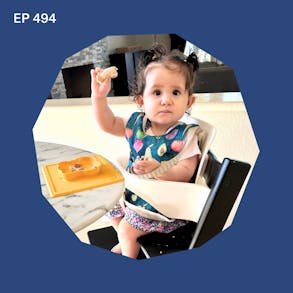

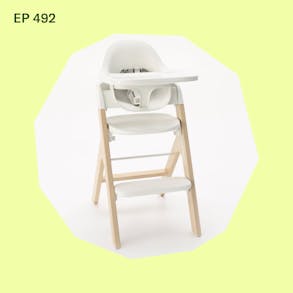
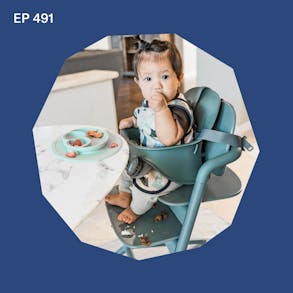
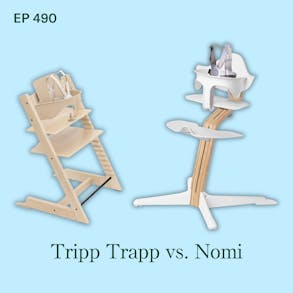
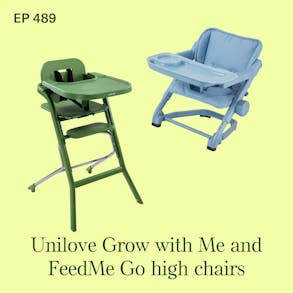
Katie Ferraro (1s):
And I know the thought, especially if you're not big into cooking of like starting solid foods with your baby and needing to buy all this food can be overwhelming. I don't want it to be your pantry can be a Haven of foods that you already have on hand that your baby can eat. They're all in this episode. Hey, there I'm Katie Ferraro, registered dietitian, college nutrition professor and mom of seven specializing in baby led weaning. Here on the baby led weaning made easy podcast. I help you strip out all of the noise and nonsense about feeding, leaving you with the confidence and knowledge you need to give your baby a safe start to solid foods using baby led weaning.
Katie Ferraro (42s):
Hey guys, welcome back in this episode, I want to share some pantry planning tips. If you're just getting started with baby led weaning. And when I say pantry, I'm thinking shelf stable, dry goods. Of course, if you're just getting ready for baby led weaning, you might be at the grocery store. I'm going to do a separate episode on perishables for baby led weaning. But today I want to focus on the pantry items that I think might be a good idea for you to have on hand, as you get started with baby led weaning. I like to start each of these mini BLW trainings with a baby led weaning tip of the day and my tip for you today, like it is a lot of time is about sodium because when we're thinking about canned goods or foods that can stay on the shelf for a while, oftentimes manufacturers will use sodium because of course it is the cheapest preservative, but babies should not have significant amounts of added sodium.
Katie Ferraro (1m 30s):
So I'd love for you to keep your eyeballs on the food labels. My general rule of thumb, when I'm selecting an item, that's in a package that I'm going to serve to my baby, I like to see less than 100 milligrams of sodium per serving. Now there's no hard and fast guidance about how much added salt babies can or should have. We want to keep it as low as possible. I feel comfortable with a hundred because most of the foods that I'm feeding my baby do not come out of a package. So when they do a little bit of sodium is inevitable, but also the serving size that's posted on the labels, that's for adults and babies typically eat less than that. So, just keep your eyeballs on the sodium and let's dive in looking at some pantry items you can have on hand when you're starting solids with baby led weaning.
Katie Ferraro (2m 11s):
I'm going to be sharing some of the different categories of foods and then some of my favorite items from those foods in this episode, but it's kind of a lot. So I went ahead and made a download for you guys called the baby led weaning pantry planner and I'm going to link to that for the show notes. For this episode, if you go to blwpodcast.com forward slash 91, that's where you can find the download that will itemize all of the things I'm about to talk about that I think are handy to have on hand when you're starting solids. And I don't know about you guys, but my pantry, it's always kind of a hot mess. Like I go through there, I'm like, what was I thinking about this? We actually did a pantry challenge. It was a 10 day pantry challenge at the very, very beginning of COVID.
Katie Ferraro (2m 53s):
And I ended up with some weird stuff in my pantry, but I used a lot of weird stuff from my pantry. And it really showed me that there's almost no food that you can't feed to a baby. Obviously we want to stay away from added sugars. We don't give honey to babies, but you tell me what's in your pantry and I can probably find a way that you can use it. But since we can't go through everyone's pantry, I went through my pantry and organized categories, vegetables, fruit, legumes, seafood, as well as some dry goods and miscellaneous items that I think you might be interested in. So let's start with the vegetables you can make, literally almost any version and a fresh or frozen vegetables worked for baby led weaning and make it safe. And canned veggies can work well too. You just have to keep an eye on the sodium. So always look for no added salt versions of canned vegetables.
Katie Ferraro (3m 35s):
A couple that I love artichoke hearts. I love cooking, but I just don't like dealing with raw artichokes. There are some canned versions of the canned tends to be lower in sodium than jarred artichokes. You still want to make sure they pass the squish test, meaning that if you push the artichokes between your thumb and your forefinger, there's a little bit of give, but artichokes are a great one. Beets, I do not love cooking beets. I feel kind of negative in this episode. Not meaning to, but beets are just one of my least favorite foods. I can't stand the smell of them cooking, so when I feed them to my babies, I do it out of the can. Green beans, I love fresh green beans for adults by no matter how well you cook them, they're still too stringy for babies.
Katie Ferraro (4m 17s):
You can certainly do certain types of frozen ones, but you can find canned green beans that are very low in sodium. Tomatoes are another great canned vegetable. I know they're technically a fruit, but you can find no added salt versions. When you're reading your labels, you might see like no added salt, low sodium reduced sodium, what's the difference ? No added salt is your best bet. Low sodium just means 140 milligrams or less. Remember I like a hundred milligrams or less. So if you can do no added salt, that's preferable over the low sodium versions. And then reduce sodium just means 25% less salt than the regular version of that. So you do need to read your labels pretty closely, cause like a can of beans might look the same, but have three different levels of sodium. So just read the labels. When it comes to canned fruit, canned fruit can be a little bit tricky because these items tend to have added sugar or syrup, but you can find unsweetened versions of canned fruit.
Katie Ferraro (4m 59s):
Some of the ones I love are unsweetened applesauce. I love that you actually can get cherries that are canned. Some of them I haven't syrup, but there's definitely cherries that come packed only in water. And they're already pitted for you, which is a nice convenience. Jackfruit, you can find in the grocery store without added sugar, that's shelf, stable. Pineapple, I love canned pineapple. I like to do the rings and then cut them in half again. Make sure it's packed in its own juice, not in syrup. And then canned pumpkin is a great one. You want to make sure that you're offering your baby, the canned pumpkin puree only, and not the pumpkin pie mix. If you guys are interested in pumpkin stuff, I have a full episode that he did all about how to use canned pumpkin that's episode 69.
Katie Ferraro (5m 42s):
It's called pumpkin five easy ways your baby can safely eat pumpkin. Legumes are another great category when you're a pantry planning or just dried peas and beans. They're amazing foods for babies because they're packed with plant protein and fiber and iron. Now your earlier eaters, they're not going to be able to pick up the really small sized beans like black beans and kidney beans until they get their pincer grasp, which usually happens by about nine months of age. Some of the really small legumes, they are exactly the size that could occlude your baby's airway when they're early on in eating. So I recommend waiting a little bit until the baby's a little bit older, nine, ten months. I generally feel more comfortable doing some of those cans legumes also because they can pick them up. But I still will flatten things like black beans or garbanzo beans, kidney beans. I flattened them with my thumb.
Katie Ferraro (6m 22s):
I'm just like I do blueberries up until the time the baby is one or longer. If you feel like you need to, if you're doing canned garbanzo beans, I like to slip the bean out of the skin, flatten it with my thumb. You can certainly find a lot of varieties of no added salt, canned legumes that worked for baby led weaning. Some of the ones I love are things like black beans, garbanzo beans, kidney beans, Pinto beans, and as always looking for no added salt varieties of those. Next category of pantry items, can see seafood. You might be like, whoa, she's always talking about canned seafood. And if you listen to some of the earlier episodes, I do love talking about canned foods because I mean, I love fresh and frozen foods as much as the next person, but I also hate going to the grocery store. So if I can have stuff in my pantry, when I'm trying one new food a day for my baby, I do it.
Katie Ferraro (7m 5s):
I have a whole separate episode on canned foods. If you go to episode number 75, that was canned foods that can work for baby led weaning, check that out. But when it comes to seafood, anchovies, clams, salmon, sardines, tuna, keeping in mind that fish and shellfish are two separate categories of the potentially allergenic foods. But if you're not inclined to make fresh or frozen clams, you can get canned versions. Now a lot of the seafood is naturally high in minerals, including sodium. So just look for the ones that don't have any added salt, but know that there will be some sodium when you're buying those canned fish items, but have them on hand when it's time to do fish day, you'll be happy that you have a tin of no added salt boneless, skinless anchovies on hand. And what about dry goods?
Katie Ferraro (7m 45s):
So depending upon your cooking and baking abilities or desires, we all have differing levels of dry goods already stocking our pantry. But a few of the ones that I liked for baby led weaning on almond flour is a great one. Really easy way to introduce your baby to the potentially allergenic food. Tree nut, I use almond flour in no added sugar baked good recipes or for BLW pancakes. Oats are another good one. I did a whole episode, 47 all about oatmeal and how you can safely feed that to your baby. But things like quick cookie notes, overnight steel cut oats, they all work for BLW. Again, check out episode 47 for more oatmeal stuff. Panko, I'm a huge fan of Japanese style bread crumbs called panko. They're lower in sodium than traditional breadcrumbs go great in baby led weaning fritter recipes or roll slippery foods in super, super versatile food that you might not have recognized is a low sodium option.
Katie Ferraro (8m 33s):
Pasta of course, regular white pasta is fine. Whole wheat, free, whatever you want to do. I like the longer size pieces that babies can pick up things like penne, a or rigatoni or cavatappi. Rice as a dry good. If your family eats rice. I mean, I think it's like the hardest baby led weaning food to clean up and it certain my least favorite, but rice goes great in a rice patty or a ball or a fritter that you can cook in and have your baby self feed. Another staple that I like to have on hand or wheat germ or wheat bran, these are high iron powdered items. They're not only great for baking with, but you can also like roll those more slippery baby led weaning foods in as well, they also have iron. And then whole grains. I mean check out whole grains like farro or bulgur, quinoa, if you find yourself getting stuck in that potatoes, rice, pasta, carb, rut, there's nothing wrong with those foods, but there's lots more carbohydrate containing foods babies can eat including whole grains.
Katie Ferraro (9m 24s):
I like the ones I get. I usually order them online from Bob's red mill. They've got a great variety of whole grains on that site. It just gets them sent to your house. And then we can chat about how you use them. A couple other miscellaneous foods that you might find helpful to have in your pantry, I like agave syrup. I don't use a ton of it, but if there's a recipe that calls for one or two tablespoons of honey, we don't feed honey to babies until they're age one, we don't do added sweeteners, but agave is considered to be a natural sweetener. Get use it in moderation, just small amounts, babies shouldn't be eating a lot of sweet foods to begin with, but having agave on hand is helpful for substitutions and recipes. Broth, I like to do low sodium, no added salt broths either or super helpful in making soft, slow, cooked cuts of meat and just making them safe for babies to eat.
Katie Ferraro (10m 6s):
You can also make soups and stews so low and no sodium broths worked great. Any sort of seasoning. Like I like chipotle in the little chipotle chilies in adobo sauce for example, some brands are low sodium version. So just start reading those labels. If you want, like seasoning mixes. A lot of times they'll just be half salt, but there's ones out there that aren't coconut milk is another great canned item. Unsweetened coconut milk adds flavor and fat to your family meals. Again, I know I'm running through a lot of foods here. I'm going to link up that. Download with all of these same items in the pantry planner, download that's available on the show notes for this episode at blwpodcast.com forward slash 91. Another favorite one are prunes like dried sticky fruits, like prunes, definitely a choking hazard for babies, but you can make a homemade prune puree safely, which is especially helpful for constipation.
Katie Ferraro (10m 51s):
So I have a blog post called help my baby is constipated. It's one of the most heavily trafficked parts of my website cause there's a recipe at the end of that blog for a homemade apple prune puree. I'll link that blog in the show notes again for this episode at blwpodcast.com forward slash 91. And I want to end it with vinegar, vinegar helps introduce babies to a new taste of sour, but some of the seasoned vinegar, especially like seasoned rice vinegars will have added salt, but regular unseasoned vinegars do not have salt and it's a great pantry item to have on hand when you're starting baby led weaning. So again, grab that, download the pantry planner. If you want more detail on all of these items, it's at blwpodcast.com forward slash 91.
Katie Ferraro (11m 31s):
Thanks for listening. Bye now.
Get baby-led weaning recipes and tips delivered right to your email inbox.